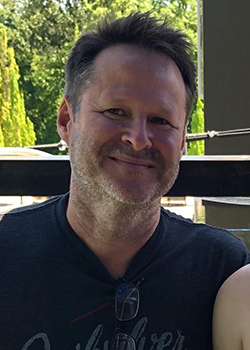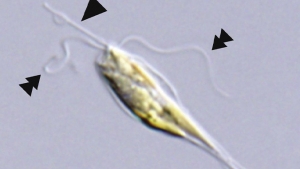A new taxonomic class of oceanic phytoplankton, Rappephyceae, has been named in honor of Michael Rappé, a professor at the University of Hawaiʻi at Mānoa’s Hawaiʻi Institute of Marine Biology. Phytoplankton are microscopic marine algae.

Rappephyceae is a group of organisms that are among the most abundant phytoplankton in the ocean and appear to be an important contributor to global photosynthesis.
As a graduate student at Oregon State University, Rappé first discovered this group by sequencing DNA from seawater collected from the Atlantic Ocean near Cape Hatteras, North Carolina, and published the finding in 1998.
Recently, an international team of researchers successfully isolated the first phytoplankton strain belonging to this genetic lineage and determined that this represents a unique class of organisms deserving of a distinct taxonomic label.
“Ours were some of the first studies to use DNA sequencing to describe coastal bacterioplankton communities, allowing us to identify natural communities of phytoplankton in a way that wasn’t possible otherwise,” said Rappé. “This revealed a particular DNA sequence that was unique—it did not have any close relatives that had been cultured—and it was widely distributed in the global ocean.”
The novel group of phytoplankton that Rappé discovered is a type of haptophyte, a category of marine organisms that includes one of the most abundant open ocean phytoplankton called coccolithophores. Coccolithophores are covered by microscopic plates made out of calcium carbonate and are very common microfossils.

Further, Rappephyceae evolved from an ancient evolutionary branch within the haptophytes and provide several clues to how this group has come to occupy certain ecological niches in the ocean.
“I am honored that my colleagues would choose Rappephyceae as the name for this unique and abundant group of oceanic phytoplankton, and humbly thank them for this distinction,” said Rappé.
This effort is an example of UH Mānoa’s goal of Excellence in Research: Advancing the Research and Creative Work Enterprise (PDF), one of four goals identified in the 2015–25 Strategic Plan (PDF), updated in December 2020.
For more information, see the School of Ocean and Earth Science and Technology’s website.
–By Marcie Grabowski

